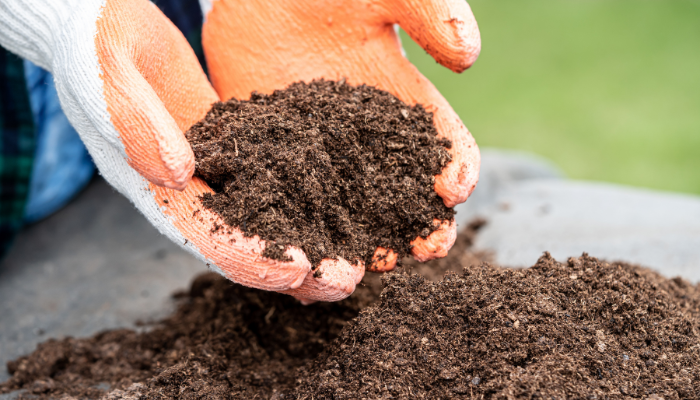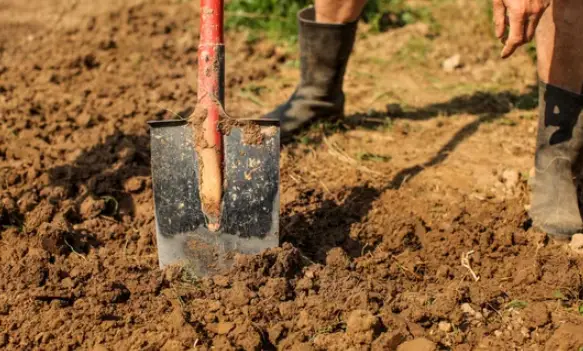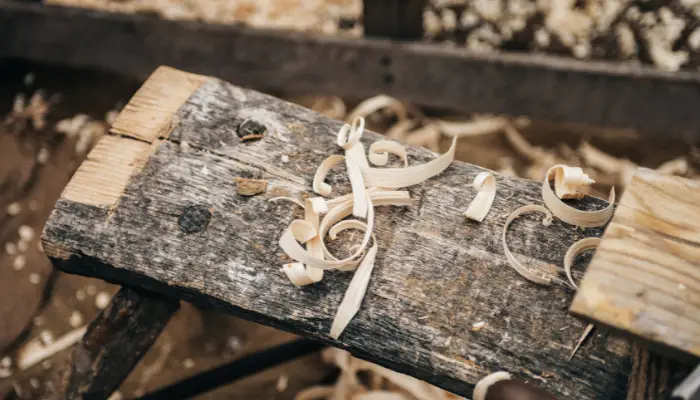How to Estimate the Weight of Topsoil for Your Landscaping Project
Topsoil is the uppermost layer of soil that contains organic matter and nutrients for plant growth. It is essential for any landscaping project, whether you want to create a lawn, a garden, or a flower bed. But how much topsoil do you need, and how much does it weigh? In this blog post, we will answer these questions and help you plan your topsoil delivery and transportation.
What Factors Affect the Weight of Topsoil?
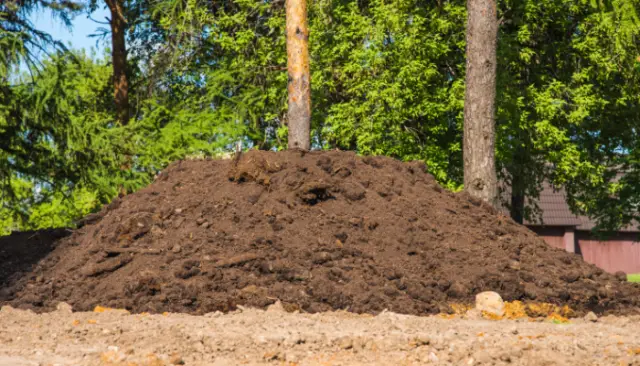
The weight of topsoil depends on several factors, such as:
- The type of soil: Different types of soil have different densities and compositions. For example, sandy soil is lighter than clay soil, and loamy soil is somewhere in between.
- The moisture content: wet soil is heavier than dry soil because water adds weight and volume. The moisture content of topsoil can vary depending on the weather, the season, and the source of the soil.
- The debris and rocks: Topsoil may contain some debris and rocks that can increase its weight and reduce its quality. Ideally, you want to use screened topsoil that has been filtered to remove any unwanted materials.
How do I measure the volume of topsoil?
The volume of topsoil is usually measured in cubic yards, which is a unit of measurement that equals 27 cubic feet. To calculate the volume of topsoil you need for your project, you need to measure the length, width, and depth of the area you want to cover with topsoil. Then, multiply these three numbers and divide by 27 to get the volume in cubic yards. For example, if you want to cover a 10 by 20-foot area with 4 inches of topsoil, the formula would be:
(10 x 20 x 0.33) / 27 = 2.44 cubic yards
You can also use online calculators or charts to estimate the volume of topsoil you need based on the size and shape of your area.
How do I estimate the weight of topsoil?
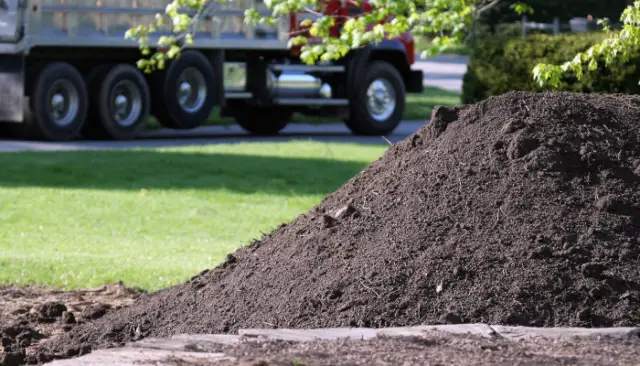
The weight of topsoil can vary depending on the factors mentioned above, but the average weight is between 2,200 and 2,700 pounds per cubic yard. This means that a yard of topsoil can weigh anywhere from 1 to 1.35 tons. To estimate the weight of topsoil you need for your project, you can multiply the volume in cubic yards by the average weight per cubic yard. For example, if you need 2.44 cubic yards of topsoil, the formula would be:
2.44 x 2,450 = 5,971 pounds
You can also use online calculators or charts to estimate the weight of topsoil you need based on the volume and type of soil.
How to Plan Your Topsoil Delivery and Transportation?
Once you have estimated the volume and weight of topsoil you need for your project, you need to plan how to get it delivered and transported to your site. Here are some tips to consider:
- Compare prices and quality: You can buy topsoil from local nurseries, garden centers, or landscaping supply stores. You can also order it online from reputable sources. Compare the prices and quality of different options and choose the one that suits your budget and needs. You can also ask for samples or reviews to check the quality of the topsoil before you buy it.
- Choose the delivery method: You can pick up the topsoil yourself or deliver it to your site. If you choose to pick it up yourself, you need to have a suitable vehicle that can handle the weight and volume of the topsoil. A full-size pickup truck can usually carry up to 2 cubic yards of topsoil, while a trailer can carry more. If you choose to have it delivered, you need to make sure that the delivery truck can access your site and unload the topsoil safely and conveniently. You may also need to pay extra fees for delivery and tipping.
- Prepare the site: Before you receive the topsoil, you need to prepare the site where you want to use it. You need to clear the area of any weeds, rocks, or debris and level the ground. You also need to mark the area’s boundaries and leave enough space for the delivery truck to maneuver and unload the topsoil. You may also want to cover the area with a tarp or plastic sheet to prevent the topsoil from getting wet or contaminated.
Here is a possible table that compares the weight, cost, and coverage of different types of topsoil per cubic yard:
| Topsoil Type | Weight (lbs) | Cost ($) | Coverage (sq ft) |
|---|---|---|---|
| Sandy | 2,000 | 15-25 | 100-150 |
| Clay | 2,700 | 20-30 | 100-150 |
| Loam | 2,400 | 25-35 | 100-150 |
Conclusion
Topsoil is an important component of any landscaping project, but it can also be heavy and bulky. By following the steps above, you can estimate the weight of topsoil you need for your project, and plan your topsoil delivery and transportation accordingly. This way, you can save time, money, and effort and ensure the success of your project.
Frequently Asked Questions on Topsoil Weight Per Yard
What is topsoil, and why is it important for landscaping?
- A: Topsoil is the uppermost layer of soil that contains organic matter and nutrients for plant growth. It is important for landscaping because it provides a fertile and stable base for plants to thrive.
How do I know what type of topsoil I need for my project?
- A: The type of topsoil you need depends on the type of plants you want to grow and the condition of your existing soil. Generally, you want to choose a topsoil that matches or improves the texture, drainage, and pH of your soil. You can test your soil using a kit or a meter, or consult a professional for advice.
How much topsoil do I need for my project?
- A: The amount of topsoil you need depends on the size and shape of the area you want to cover and the depth of topsoil you want to apply. You can measure the area using a tape measure or a wheel, and multiply the length, width, and depth to get the volume in cubic feet. Then, divide by 27 to get the volume in cubic yards. You can also use online calculators or charts to estimate the volume of topsoil you need based on the size and shape of your area.
How much does topsoil weigh per yard?
- A: The weight of topsoil per yard varies depending on the type, moisture, and quality of the soil. The average weight is between 2,200 to 2,700 pounds per cubic yard, or 1 to 1.35 tons per cubic yard. You can multiply the volume of topsoil you need by the average weight per cubic yard to estimate the total weight of topsoil you need for your project.
How do I buy topsoil for my project?
- A: You can buy topsoil from local nurseries, garden centers, or landscaping supply stores. You can also order it online from reputable sources. You should compare the prices and quality of different options and choose the one that suits your budget and needs. You should also ask for samples or reviews to check the quality of the topsoil before you buy it.
How do I transport topsoil to my site?
- A: You can either pick up the topsoil yourself or have it delivered to your site. If you choose to pick it up yourself, you need to have a suitable vehicle that can handle the weight and volume of the topsoil. A full-size pickup truck can usually carry up to 2 cubic yards of topsoil, while a trailer can carry more. If you choose to have it delivered, you need to make sure that the delivery truck can access your site and unload the topsoil safely and conveniently. You may also need to pay extra fees for delivery and tipping.
How do I store topsoil until I use it?
- A: You should store topsoil in a dry and shaded area, away from direct sunlight and rain. You should also cover it with a tarp or plastic sheet to prevent it from getting wet or contaminated. You should use the topsoil as soon as possible, or within a few weeks, to avoid losing its quality and nutrients.
How do I prepare the site for topsoil application?
- A: Before you apply topsoil, you should clear the site of any weeds, rocks, or debris, and level the ground. You should also mark the boundaries of the area and leave enough space for the delivery truck to maneuver and unload the topsoil. You may also want to till or aerate the existing soil to improve its drainage and structure.
How do I apply topsoil to my site?
- A: You can use a shovel, a rake, a wheelbarrow, or a spreader to distribute the topsoil evenly over the area. You should aim for a uniform depth of topsoil, depending on the type of plants you want to grow and the condition of your existing soil. Generally, you want to apply 4 to 6 inches of topsoil for lawns, 8 to 12 inches of topsoil for gardens, and 12 to 18 inches of topsoil for raised beds.
How do I maintain the topsoil after application?
- A: After you apply topsoil, you should water it thoroughly to settle it and remove any air pockets. You should also add mulch, compost, or fertilizer to enrich the topsoil and protect it from erosion and weeds. You should also monitor the topsoil regularly and adjust its moisture, pH, and nutrients as needed. You may also need to add more topsoil overtime to replenish its quality and volume.

